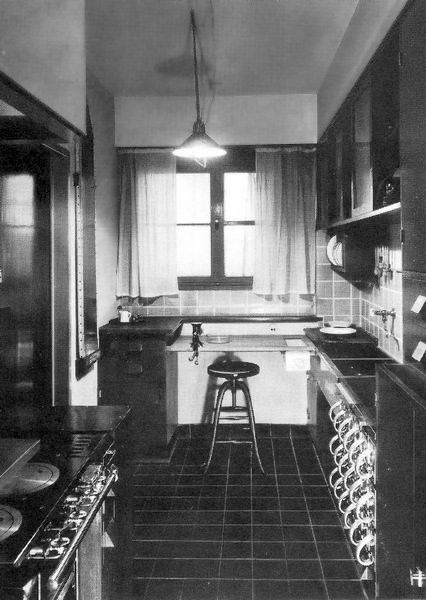
Model chairs at the "Museum der Dinge." Courtesy www.lazyoaf.co.uk.
Continuing my inverted vision quest in search of non-art, I went to the Museum der Dinge (Museum of Things), whose name and plucky mission beckoned me. The MDD sits on Oranienstraße, an increasingly back-packy, cruisy thoroughfare. In opposition to its location, the Museum is clean and somehow sweet. This perceived “sweetness” seems largely due to an overwhelming dose of nostalgia, although more subtly, it comes from simple and unobtrusive design. The collection is presented under glass in tall, unadorned wooden wardrobes. Often, the “things” displayed are divided by category–but those categories can seem laughably arbitrary. One shelf offers up model animals, but with all the animals mixed despite epoch, size, general condition and imaginary animal origins. So, a homemade stuffed bird looms over a 50s toy Lion in a weirdly psychedelic scale disparity.
The MDD is full of moments like these, as the curators of the collection seek to “visualize and re-experience (the) 20th century’s history of things.” The MDD houses 25,000 objects, spanning from the beginning of the 20th century to the present day. And, unlike most museums, chronology plays a very small part in its configuration. Instead, the MDD viewer mostly has to guess when objects were created, popularized etc.
*On Sundays, the Museum offers the assistance of “Thing-Interpreters.”
**Although the sequined Hitler pillows and Kaiser brand cigars kind of give themselves away.
Obvious crowd-pleasers are the shelves containing scrappy military toys from the Second World War, with small wooden tank replicas, German foot soldiers and a little Führer with arm-raising capability (erp!). One of my favorite WWII era things was an onyx-colored relief replica of the Olympic stadium from 1936, carved to scale with a cardboard map above it.
I was amazed by the organizing principles of the MDD, in that they seem quite personal and a little messy (like lyfe). One section is entirely devoted to things that are yellow and black. Another section offers up old cigarette cases, like the candidly racist “Moslem” brand. The lack of wall labels, identifiers and texts is both refreshing and frustrating. I imagine some of my “Virgo” friends would feel unnerved by the lack of a historicizing compass. And it is kind of disconcerting, especially in cases like the cigarette box, which perhaps demand more context and consideration.
But, on the other hand, it does allow the viewer to gain a purer visual insight into objecthood while emphasizing a non-linear way of thinking about cultural growth. There were many times when I was surprised at the non-arc of product design, like how hammers and sickles kind of look the same no matter what. Chairs from the 1920s seem incredibly similar to their later (still Bauhaus-inspired) incarnations. A wood-worked subway bench pre-WWII installed in the main space is especially captivating if not a dramatic departure from current subway benches.
Sometimes the MDD’s pairings are a bit too jarring and/or obvious. In what seems like a definitive Thomas Hirschhorn political referendum, a few mannequin heads are placed directly above gas masks. Another strange coupling is a string of condoms displayed alongside “Putzi kinder-zahnpflege,” or children’s toothpaste.
But maybe that’s the point of MDD; that all of these things mingle as they do in the basement of your mind, alluding to the great impact of design on the cultural consciousness, and of your own place on the continuum of…stuff.

"Frankfurt Kitchen," courtesy Wikipedia
The MDD houses the Deutscher Werkbund Archiv as well as an original “Frankfurt Kitchen,” a utilitarian kitchen space designed in 1926 by Margarete Schütte-Lihotzky to optimize workflow in close quarters. Lihotzy created the kitchen as part of a low cost housing demand that occurred after WWI. Alongside other architects, she legitimized the role of housework as work-work and embodied the Bauhaus “New Man” ideal of socially engaged functionality. I think the collection at MDD must be seen through Bauhaus-tinted glasses and an investment in cost-effective design as opposed to ostentation.



